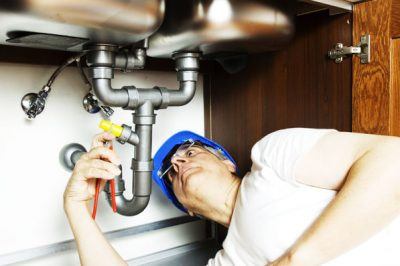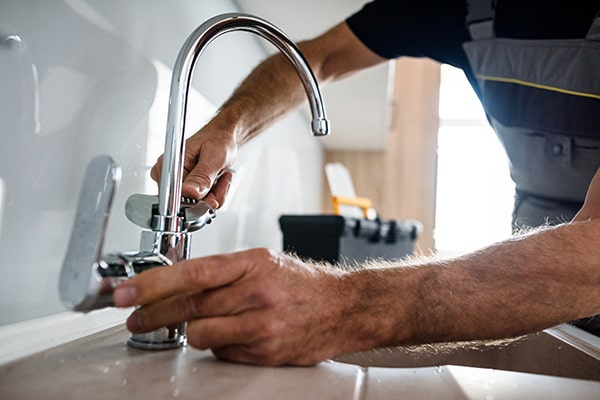Foreseeing Plumbing: Trends and Advancements
Foreseeing Plumbing: Trends and Advancements
Blog Article
We have discovered the article about The Future of Plumbing: Trends and Innovations to Watch listed below on the net and reckoned it made perfect sense to quickly share it with you over here.

Intro
The pipes industry is going through a transformative stage driven by technical developments and expanding problems for sustainability and efficiency. This post checks out arising fads and developments shaping the future of pipes.
Governing Landscape
Regulatory frameworks play an important duty in shaping the fostering of pipes technologies, with standards and codes governing whatever from water effectiveness to item safety and security. As modern technologies remain to progress, governing bodies must adapt to ensure consumer protection and environmental stewardship.
Future Overview
The future of plumbing is identified by continued development and assimilation with various other fields such as IoT, renewable resource, and building automation. By embracing lasting methods, leveraging emerging modern technologies, and focusing on user-centric design, the plumbing industry is poised to deal with the developing demands of society while lessening its environmental impact.
Augmented Reality in Plumbing
Increased Truth (AR) innovation is transforming plumbing by offering specialists with real-time visual guidance for troubleshooting and fixing jobs. AR-enabled wise glasses or mobile applications overlay electronic details onto the physical atmosphere, assisting plumbings visualize pipeline designs, determine hidden leakages, and execute fixings with accuracy.
Impact of 3D Printing
The advent of 3D printing has actually introduced new opportunities in producing plumbing components. From custom-made fixtures to intricate pipeline fittings, 3D printing permits fast prototyping and on-demand production, minimizing lead times and allowing better personalization in plumbing style.
Health and Safety Qualities
In action to heightened worries for health and safety, plumbing components are incorporating attributes such as antimicrobial surfaces, touchless procedure, and self-cleaning mechanisms. These advancements not only improve hygiene yet likewise advertise user convenience and convenience.
Hygiene-focused Components
Touchless taps, self-sanitizing bathrooms, and antimicrobial surface areas are becoming significantly common in residential and business settings, reducing the threat of bacterium transmission and promoting a cleaner, healthier environment.
Water Quality Monitoring
Innovations in water high quality tracking innovations allow homeowners to keep an eye on the purity and safety and security of their supply of water in real-time. Smart water quality sensing units can identify impurities, pH levels, and temperature level variations, equipping individuals to take positive actions to guarantee water security.
Remote Pipes Providers
Remote diagnostics and virtual assistance are reinventing the means pipes solutions are delivered. With video conferencing and remote gain access to modern technologies, plumbing professionals can fix problems, give guidance for DIY fixings, and even execute remote examinations, providing better ease of access and benefit to house owners.
Difficulties and Opportunities
While pipes technologies hold tremendous assurance, they likewise existing difficulties such as data privacy concerns, regulatory conformity, and the demand for labor force training. Attending to these obstacles needs partnership between industry stakeholders and regulatory bodies to make certain secure and accountable application of new technologies.
Smart Plumbing Equipments
Including wise technology right into pipes systems allows remote monitoring, leakage detection, and automated upkeep. Smart sensors and IoT (Net of Points) devices permit house owners and plumbing technicians to keep track of water usage and identify concerns in real-time, causing much more efficient source management and aggressive maintenance.
Water Performance Solutions
With boosting emphasis on water preservation, cutting-edge services are being created to reduce water wastage in plumbing systems. High-efficiency components, greywater recycling systems, and wise watering controllers are among the modern technologies assisting consumers lower their water footprint while keeping comfort and comfort.
Sustainable Materials
The change towards sustainability reaches plumbing products, with a growing preference for eco-friendly options. Eco-friendly piping materials, such as PEX (cross-linked polyethylene) and HDPE (high-density polyethylene), deal resilience and resistance to rust without compromising ecological integrity.
Predictive Upkeep
Anticipating maintenance methods utilize information analytics and machine learning algorithms to anticipate and stop pipes concerns before they happen. By assessing historic data and performance metrics, anticipating upkeep algorithms can determine patterns and abnormalities, making it possible for aggressive interventions to avoid expensive repair services and disturbances.
Conclusion
In conclusion, the future of pipes is specified by a merging of technology, sustainability, and user-centric design. By accepting wise options, lasting products, and aggressive maintenance practices, the plumbing industry can enhance effectiveness, promote security, and contribute to a much more sustainable future.
The Future of Plumbing: Trends and Innovations to Watch
Introduction to Future Plumbing Trends
The future of plumbing is being shaped by several key factors, including technological advancements, environmental concerns, and changing consumer expectations. These factors are driving the development of new products, services, and practices that enhance the efficiency, sustainability, and convenience of plumbing systems.
Key Trends and Innovations in Plumbing
Smart Plumbing Systems: The integration of smart technology into plumbing systems is transforming the way we manage water usage and detect issues. Smart leak detectors, automated water shut-off valves, and smart faucets are just a few examples of how technology is enhancing plumbing systems. These devices provide real-time data and remote control capabilities, allowing homeowners to monitor and manage their water usage more effectively. Water Conservation and Efficiency: With increasing concerns about water scarcity, there is a growing emphasis on water conservation and efficiency. Innovations such as low-flow fixtures, greywater recycling systems, and rainwater harvesting are becoming more popular. Plumbers are adopting these technologies to help customers reduce their water consumption and save on utility bills. Sustainable Materials: The use of sustainable materials in plumbing systems is gaining traction. This includes the adoption of recyclable and biodegradable materials, as well as the use of non-toxic and eco-friendly products. Sustainable materials help reduce the environmental impact of plumbing systems and promote long-term sustainability. Energy-Efficient Water Heaters: Advances in water heating technology are leading to the development of more energy-efficient systems. Tankless water heaters, solar water heaters, and heat pump water heaters are becoming more prevalent. These systems offer significant energy savings and reduce the carbon footprint of homes and businesses. Trenchless Technology: Trenchless technology is revolutionizing the way plumbing repairs and installations are conducted. This method allows for the repair or replacement of pipes without extensive excavation, minimizing disruption and reducing costs. Techniques such as pipe bursting and cured-in-place pipe (CIPP) lining are gaining popularity. Health and Safety: The focus on health and safety is driving innovations in plumbing systems. Touchless faucets and fixtures, antimicrobial materials, and improved water filtration systems are being developed to enhance hygiene and protect public health. Plumbers are adopting these innovations to meet the growing demand for safer and healthier plumbing solutions. Remote Diagnostics and Monitoring: The ability to diagnose and monitor plumbing systems remotely is becoming increasingly important. Remote diagnostic tools and sensors allow plumbers to identify issues and perform maintenance without the need for on-site visits. This enhances efficiency and reduces the need for costly emergency repairs. Impact of Future Trends on the Plumbing Industry
Enhanced Efficiency: The adoption of smart technology and energy-efficient systems will enhance the efficiency of plumbing systems. This will lead to reduced water and energy consumption, lower utility bills, and improved performance. Sustainability: The focus on sustainability will drive the development and adoption of eco-friendly plumbing solutions. This will contribute to the conservation of natural resources, reduction of waste, and protection of the environment. Improved Customer Experience: The integration of technology and innovative solutions will improve the customer experience. Homeowners will have greater control over their plumbing systems, access to real-time data, and the ability to manage their water usage more effectively. Increased Demand for Skilled Plumbers: The adoption of new technologies and materials will require plumbers to acquire new skills and expertise. There will be an increased demand for skilled plumbers who are knowledgeable about the latest trends and innovations. Cost Savings: The use of efficient and sustainable plumbing solutions will result in cost savings for both homeowners and businesses. Reduced water and energy consumption, lower maintenance costs, and fewer emergency repairs will contribute to overall affordability. Preparing for the Future of Plumbing
Stay Informed: Keep up-to-date with the latest trends and innovations in the plumbing industry. Attend industry conferences, participate in training programs, and engage with manufacturers to stay informed. Invest in Training: Ensure that you and your team are trained in the latest technologies and installation techniques. This will enable you to offer cutting-edge solutions to your customers and stay competitive in the market. Promote Sustainable Solutions: Highlight the benefits of eco-friendly and energy-efficient plumbing solutions to your customers. Educate them about the advantages of adopting sustainable practices and products. Leverage Technology: Embrace smart technology and remote diagnostic tools to enhance your services. Offer remote monitoring and maintenance options to provide added convenience and value to your customers. Collaborate with Manufacturers: Partner with manufacturers of innovative plumbing products to gain access to the latest solutions and technical support. This can also provide opportunities for joint marketing efforts. Focus on Customer Education: Educate your customers about the benefits and functionality of new plumbing technologies. Provide guidance on how to use smart systems and maintain sustainable plumbing solutions. Conclusion
The future of plumbing is being shaped by exciting trends and innovations that promise to enhance efficiency, sustainability, and convenience. By staying informed and embracing these changes, plumbers can provide superior services to their customers and contribute to a more sustainable future. The adoption of smart technology, sustainable materials, and energy-efficient systems will drive the evolution of the plumbing industry, creating new opportunities and challenges. By preparing for the future, plumbers can ensure their success in a rapidly changing market.

We hope you enjoyed reading our article about 7 Plumbing Industry Trends You Need To Know. Thanks so much for finding the time to read through our post. Do you know about another individual who is sincerely interested in the subject? Please feel free to promote it. Thanks so much for taking the time to read it.
Information Here Report this page